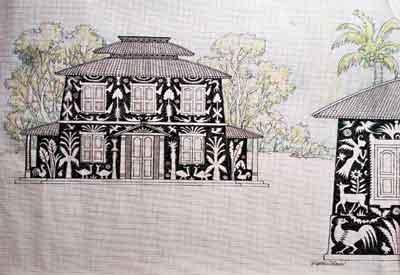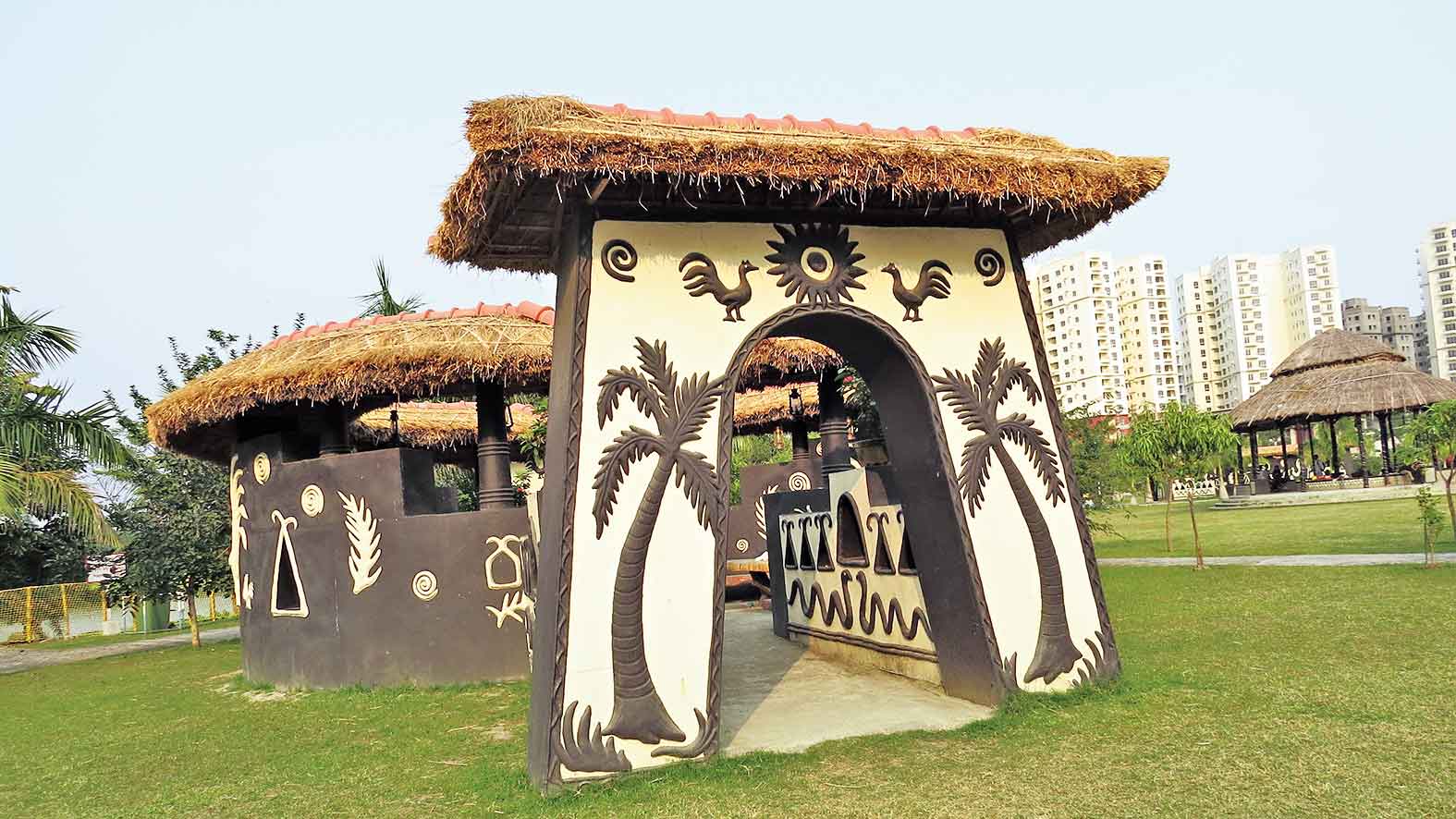A museum showcasing tribal culture will come up in Eco Urban Village. The two-storeyed structure will be inspired by Black House in Kala Bhavana, Santiniketan.
“The place is popular for picnic in winter but draws scanty footfall the rest of the year. The main reason seems to be the lack of a central attraction. It will be modelled on the tribal houses of Birbhum and on Kalo Bari of Santiniketan,” said Debashis Sen, chairman cum managing director of Hidco.
A circular structure with a thatched roof open on all sides, called Akhra, is being dismantled to make space for the museum. “The hay is rotting and the wooden superstructure damaged for quite a few years now. We were thinking of what to build in its place,” Sen said.
The proposal for the tribal museum came from Rupchand Kundu, an artiste who had built the akhra as also designed the two visitors’ galleries at the Village. “The galleries are modelled on Kalobari, painted black and with walls having a clayey texture. But they are made of cement as we had later realised that structures made of natural material were tough to maintain,” Sen added.

A sketch by Rupchand Kundu on the proposed look of the tribal museum building to come up at Eco Urban Village Sourced by the correspondent
Kundu, a resident of Anahita Housing Complex in Action Area II, plans to do up the museum with ornaments, musical instruments and artefacts used by tribals. “The walls will have relief work on tribal motifs like they have at Black House,” he said. Built by Nandalal Bose and Ramkinkar Baij in 1934, the Black House is a clay structure coated in coal tar. It has beautiful murals on its walls.
An iron superstructure will be built over which the two-storeyed hutment-like structure will come up. To be built over 1,500sq ft space, it will house some sculptures too.
The cottages that visitors rent for the day at the Village will be reinforced with brick and mortar as leaky roofs are proving to be a hazard in the sliced bamboo structures. “But we will retain their natural look,” said Sen.











